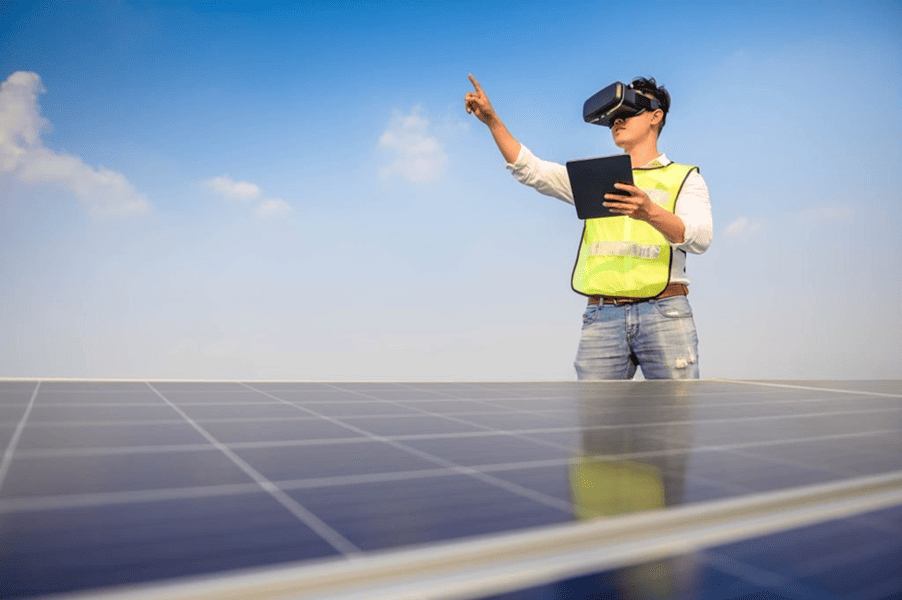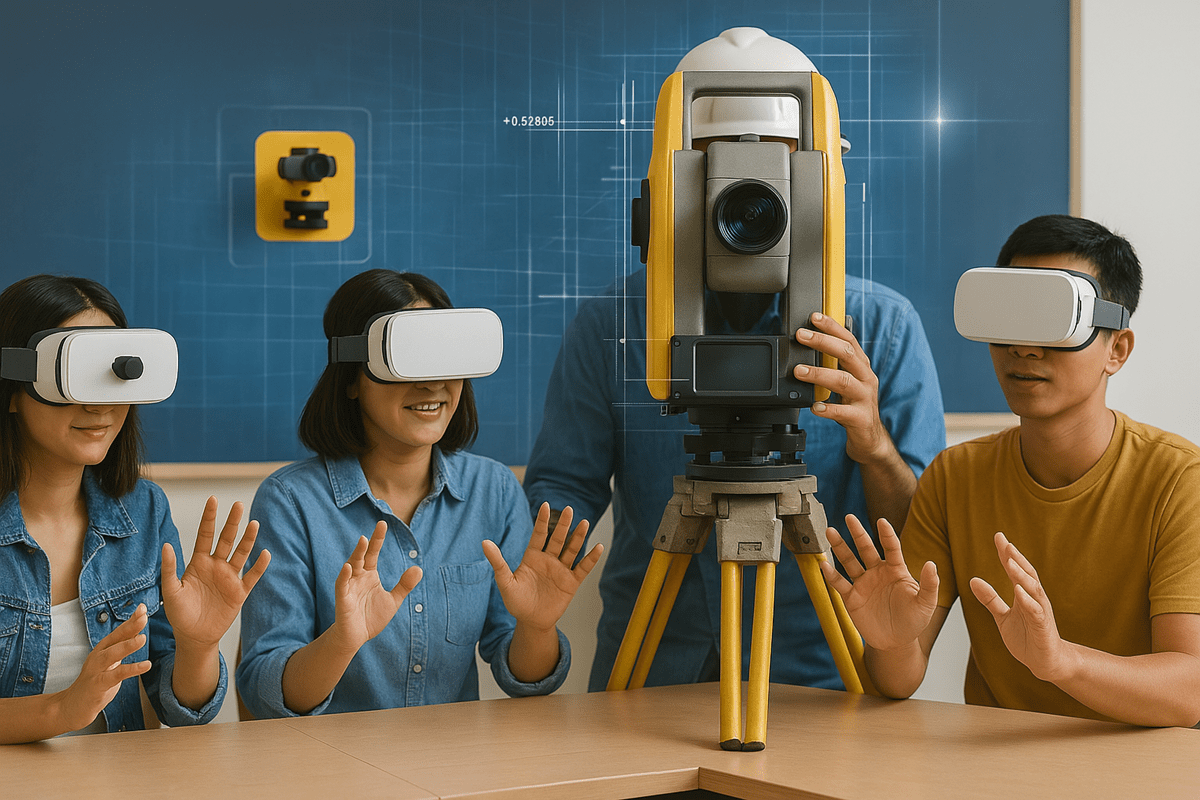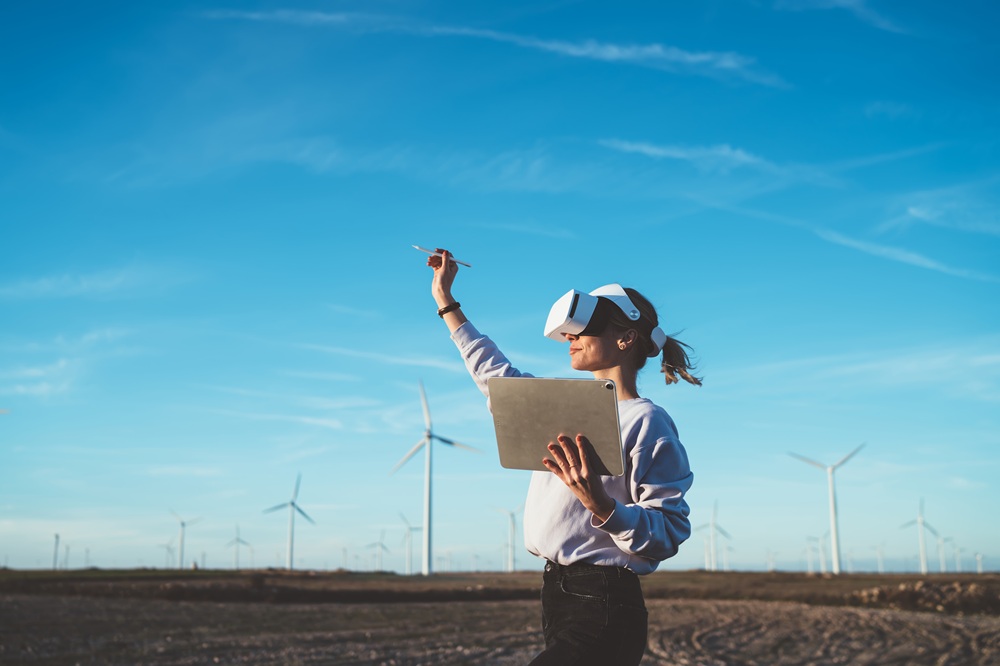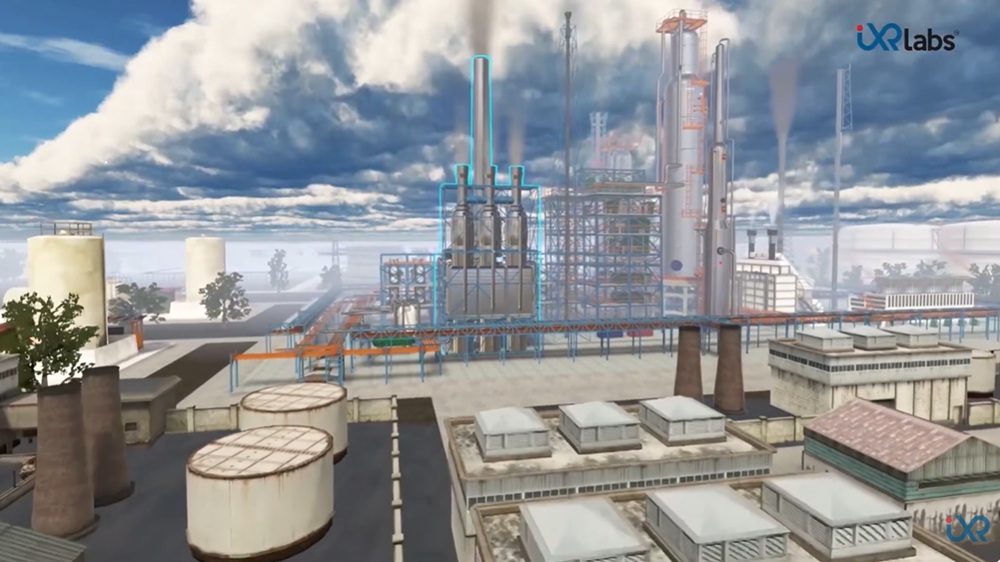Understanding Nuclear Power Generation in VR
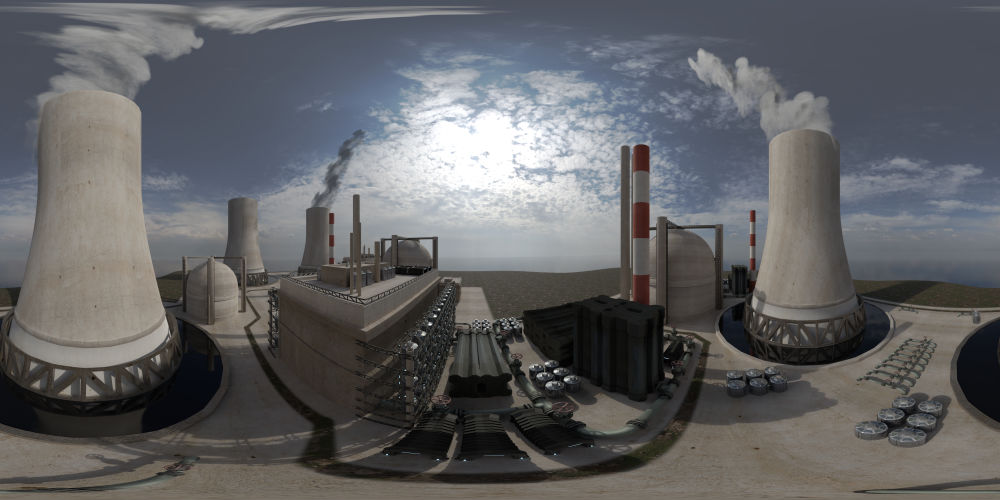
Nuclear engineering is a branch of engineering that involves all the major branches, such as mechanical engineering (thermodynamics, fluid dynamics, and stress analysis) civil engineering ( geotechnical engineering and structural engineering), and some aspects of chemical engineering (process engineering and nuclear chemistry).
Taking students on industrial nuclear power training tours forms an important part of the discipline. It helps the students demystify the processes that occur inside a nuclear power facility and also master the safety measures required in the domain.
So why exactly are prominent universities like the University of Michigan taking the aid of VR when it comes to industrial visits? Are there any challenges associated with traditional industrial tours of nuclear power plants?
Let’s find out.
Enhancing Traditional Nuclear Power Engineering Education with VR: Key Areas
Even though educators all over the world have been trying their best, nuclear power education all over the world has been facing some obstacles. Let us look at some of the key areas in which VR can enhance the learning outcomes-
➡ Need for more visualisation
Traditional nuclear power engineering industrial tours have always provided the bedrock for learners to gain knowledge about nuclear power engineering.
However, when it comes to subjects like nuclear design and thermal hydraulics, VR can serve as an effective tool to help visualize concepts like 3D models of nuclear reactors, neutron transport, and heat flow.
The Nuclear Engineering & Radiological Sciences department at the University of Michigan offers virtual visits. These virtual tours include insights into various laboratories focused on nuclear engineering, such as the Thermal Hydraulics Laboratory and the Nuclear Plant Simulation.
These virtual industrial sites are the embodiment of “active learning”, which is one of the key pillars of Education 4.0.
According to research, students using traditional methods of learning (and not active learning) are 1.5 times more likely to fail in their studies.
➡ Requirement of more safety protocols
The teachers are quite concerned that learners, who are just beginning their nuclear power engineering experiments, may lack sufficient experience with the necessary safety protocols.
This is because the learners while starting with nuclear power engineering experiments, are not very experienced with safety protocols like radiation protection and operational safety measures.
In the nuclear power engineering industrial sites, there are high-level wastes generated (like Spent Nuclear Fuel, Reprocessed Spent Fuel, and Verified High-Level wastes) and also accumulation of contaminated wastes.
These high-level wastes account for 3% of the volume but contribute to 95% of the radioactive exposure to the learners.
According to research, since 2014 there have been over a 100 accidents at nuclear power energy sites. Hence, taking the learners to these nuclear industrial sites is not always a wise decision.
Taking care of this can be a challenge for educators as the number of children goes on increasing. Hence, there is an increasing need for virtual nuclear power training.
➡ Battling adverse sentiments
Even today, when people hear about a nuclear power industrial site, it sometimes brings back memories of the Chernobyl disaster or maybe even the Hiroshima-Nagasaki disaster in Japan. This creates a subconscious bias in their minds regarding the field.
With a VR-based nuclear power engineering industrial tour, when the learner engages with the immersive experiences, it reminds them constantly of the positive effects of nuclear power engineering.
It also reduces past fears and helps build confidence. This is based on the educational principle of “cognitive load theory”.
VR can reduce external cognitive load by creating focused environments where learners can concentrate on specific tasks without distractions, and imbibe the positive impacts thoroughly.
For instance, as of 2024, nuclear power energy accounts for a whopping 10% of global electricity generation.
Witnessing how the internal components of a nuclear power plant work in tandem to generate electricity can help inspire a sense of awe in the students and help pique their curiosity.
How is our nuclear power plant module useful?
The VR-based nuclear plant generation modules offer a holistic immersive experience to the students. Here’s how it works-
• As soon as the students put on their VR headsets, this module takes them to the industrial site. The students can interact with the nuclear reactors' digital control and tweak the power levels of the machine.
• After that, they will be introduced to the other components of the nuclear power plant like the reactor core and steam turbines, via a VFT (Virtual Field Trip) module.
• Students can avail of a “guided mode”, where a virtual guide will guide them through the operations of the nuclear power plant. There will be visual overlays to help clarify the concepts further.
• There is also an” Fly Mode”- which would let them get a bird’s eye view of the nuclear power plant from above, and catch a glimpse of the operations happening inside.
• There will also be a “self-exploratory mode” where the students will be able to separate each part and learn about the same in great detail
Besides these, the students will face life-like challenges which are, Nuclear reactor simulations. They might face irregular coolant flow or increasing radiation levels and have to make decisions accordingly.
Benefits of VR In Nuclear Education
The use of VR in nuclear engineering is not very different from the benefits of VR in electrical engineering or any other more popular branch. Understanding a virtual nuclear power energy machine has endless benefits. Let’s look at some of these-
➡ A more risk-free environment
Students can avail a risk-free and controlled environment to learn about nuclear power generation.
Virtual reality based nuclear industrial tours help simulate emergencies and real-life obstacles. There is no real-life consequence and the students can practice different outcomes in a controlled environment.
The students can also collaborate with peers and interact with situations in virtual reality. This is based on the principle of “social learning theory”, proposed by Canadian-American psychologist and professor in social sciences, Albert Bandura.
It posits that collaboration and social interaction give students motivation to learn and learn from the experiences of others.
➡ Seamless visualisation
There are many complex concepts related to nuclear power energy that students face difficulty with- like heat transfer and nuclear fission. By using VR headsets, students will be able to retain information faster.
A recent study conducted by Maryland University stated that the learners using VR headsets could recall information correctly up to an extent of 90.48%, whereas from desktop learning it was just 78.57%.
This represents the key principles of Education 4.0, which stresses on personalized learning experiences, more emphasis on advanced technologies, and immersive experiences.
This is also the same reason that Google has recently declared a new phase of “AI injection”. This would enable voice questions about pictures and videos. All these technologies are a shift towards hyper-personalised experiences.
➡ Sky-high costs
Setting up the required equipment or infrastructure is impossible for most of the institutes. For example, if a course stresses on the working of a nuclear power plant, it would cost the institute a minimum of $6 billion to $49 billion to procure a machine. That is not feasible at all.
Also, the students won’t be able to witness the working of the plant in different weather conditions like scorching heat/ heavy rains, etc. The institute may need to arrange for several trips for that and it will cost the institute a fortune.
As a result of these roadblocks, students may receive a foundational understanding that lacks depth. Integrating virtual reality (VR) as a complementary tool to theoretical knowledge can enhance this learning experience by providing immersive simulations and replicating real-life scenarios. This approach allows students to engage with complex concepts more effectively, bridging the gap between theory and practice.
➡ Immersive learning methodologies
If we look at the learning retention pyramid, Reading (10%), Audio-visual elements (20%), Demonstration (30%) and Practice (75%) -all are parts of immersion learning. That’s why it is so effective.
This is very similar to the Louvre Museum in Paris, they have introduced a new experience called “Mona Lisa: Beyond the Glass’. Here, the team is making use of immersive images, lights, sounds, and other interactive elements to explore Renaissance painting and the works of Leonardo Da Vinci.
➡ Interactive elements
Traditional industrial tours might not always be able to provide interactive experiences. This can be a hassle for educators since the learners need hands-on experience in understanding complex topics like fuel management systems and control room operations. While on an industrial visit, every single student might not get the chance to interact with the machinery.
In VR industrial visits, interaction with the elements is the core principle in the virtual reality world. For instance, while learning about nuclear power engines, students can interact with the system virtually, take control of the systems, and even make their own decisions in simulated situations.

Institutes Leveraging Virtual Reality in Nuclear Industry
Let us now take a look at some of the renowned institutes all over the world that are already leveraging the benefits of Nuclear power generation in VR.
➡ University of California
In December of 2023, Sean Preins, a student created a VR application called VIRTUE (“Virtual Interactive Reality Toolkit for Understanding the EIC, pertaining to particle physics and nuclear physics.
It effectively uses experiments and gathers data regarding nuclear reactor simulation from the upcoming EIC collider at Brookhaven National University.
It also enhances data analysis with complex data structures. There was no longer a need to visit a nuclear power site to witness the process of particle detention systems, collider physics, or hypothesis testing.
➡ The University of Michigan
Here, virtual simulations are used to impart safety training to the students. This is very similar to the initiative taken by GE Hitachi to train the workers in many areas like outage, and maintenance for safety in industrial sites.
Their immersive technologies developed in North Carolina could produce simulated nuclear reactor operations like those of boiling water reactors.
➡ Purdue University
The virtual nuclear power industrial visits conducted by Purdue University aim to educate the students about the domain, and also about radiation principles. The modules generally contain content based on radiation principles, common natural sources of radiation, and the basics of nuclear reactors.
When it comes to topics like neutron activation analysis, the modules offer an interactive learning experience to the students. The modules also offer a tour of the Purdue University Reactor Number One (PUR-1 reactor).
Summing up the key takeaways from this blog-
• Using VR headsets provides the learners an opportunity to learn about the intricacies of nuclear power generation, in a risk-free and safe environment.
• The benefits of VR-based industrial tours include letting children learn complex concepts like nuclear fission through immersive simulations and enhancing retention rates.
• Using VR for industrial tours, institutes don’t have to spend much on costly infrastructure for teaching purposes.
• Using virtual reality methods in nuclear learning ensures that students are gaining hands-on experiences, thus bridging the industry skills gaps.
Final words
According to reports, the global immersive learning market size is predicted to reach $96.32 billion by the year 2029. This says a lot about the growing adoption of immersive technology by all sectors, including nuclear energy.
Here are some of the major benefits that VR-based education at iXRLabs has witnessed-
• Reduced operational costs
• More employability rate due to industry events like Novum
• Accessible learning opportunities through WebXR learning
• Advanced analytics to track the performance of each student
As more and more institutes adopt VR-based education, new innovations will continue pouring into the field of Nuclear power generation in VR, as well.
.png)
